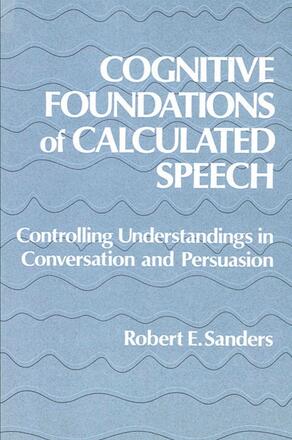
Cognitive Foundations of Calculated Speech
Controlling Understandings in Conversation and Persuasion
Alternative formats available from:
Description
In Cognitive Foundations of Calculated Speech, Robert E. Sanders shows that whether one communicates to get a response or to make one, the cognitive problem is the same—to calculate whether intended speech and behavior will have a desirable effect on the progress of the unfolding discourse or dialogue. The book details the knowledge base and principles for making such calculations.
Robert E. Sanders is Associate Professor and Chair of the Department of Communication at State University of New York at Albany.
Reviews
"This is definitely a book which addresses, head on, a fundamental topic for language and communication studies. The author pursues this topic with a highly principled theoretical perspective. He applies this general perspective to several currently popular research areas. Thus, the book combines fundamental, theoretically grounded discussion, but applies it broadly and powerfully. " — Gerry Philipsen
"Sanders views diverse communication phenomena from the standpoint of the concept of coherence or relevance (and attached concepts). This allows him to say some surprising and informative things about persuasion, visual communication, and cross-cultural communication, for example. This is a very good example of theory construction, one of the best I have seen in the field of communication. " — James J. Bradac
"The book integrates contemporary literature and scholarship in language, logic, philosophy, communication and cognitive science and integrates it into a volume devoted to communication and understanding. The field of communication needs this. " — Donald G. Ellis